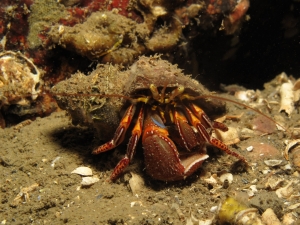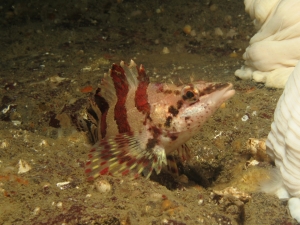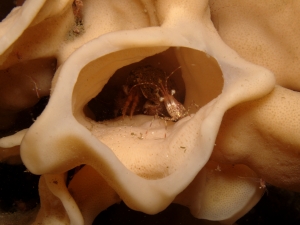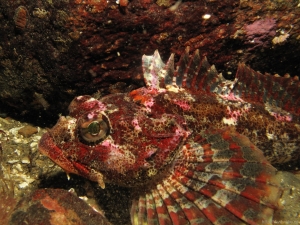Cold water diving necessitates thick insulation, which in turn requires a lot of weight to sink. With a steel tank, 5kg steel backplate and another 6kg of lead, I decided I needed more weight on my back, so I switched to doubles. Luckily the rigging for doubles is heavy enough to allow losing some of the lead ballast, but the entire rig is still rather heavy on the surface.
In the water, the doubles were a dream — They trimmed out well, and I didn’t have to fight them. After a sloppy valve drill (need to work on that) I felt comfortable enough to carry on with the dive and start taking photos.
The next step is to polish my skills and upgrade to a Fundies Tech pass…
Just one long dive today, starting in the bay then heading out to the plumose gardens. There was a touch of current out in the gardens due to the large interchange, but it was a good dive regardless. Plenty of rockfish, squat lobsters, hermit crabs, nudibranchs of various types and the other usual suspects. I managed to snap some photos I’m happy with today.
We found a cool glass sponge at about 22 meters as well. One thing I love about glass sponges is that it provides hiding places for so many small critters, and it’s a lot of fun to peek into all the nooks and crannies to see what you’ll find.
The Starfish die-off was still very evident today, and I’ve documented that in a separate post.
After we had thumbed the dive, on the ascent I found a Grunt Sculpin peaking out from a giant barnacle, the perfect photo opportunity. Unfortunately a thumbed dive is a thumbed dive, and with my camera stowed I couldn’t get a photo. It looked like there was a lot of interesting things in that area (near the rocks by the day marker) so I’ll have to go back sometime and look for photo opportunities.




